#Benitoite
Explore tagged Tumblr posts
Text


Benitoite and Bortz
150 notes
·
View notes
Text
Hnk-posting day 7: Benitoite color palette

#houseki no kuni#land of the lustrous#hnk benitoite#benitoite#hnk fanart#digital art#artists on tumblr#hnk everyday
229 notes
·
View notes
Text

2022 redraw

i remember two years ago someone told me smth about the hands in this art and today i made them even worse
#artists on tumblr#ibispaintx#digital art#artwork#fanart#digital fanart#hnk#houseki no kuni#hnk fanart#land of the lustrous#hnk alexandrite#hnk benitoite#benitoite#alexandrite
239 notes
·
View notes
Text
Ikepri fans, have you ever actually seen the kingdoms’ gems?
Rhodolite


Benitoite


Tanzanite


Achroite


Jade
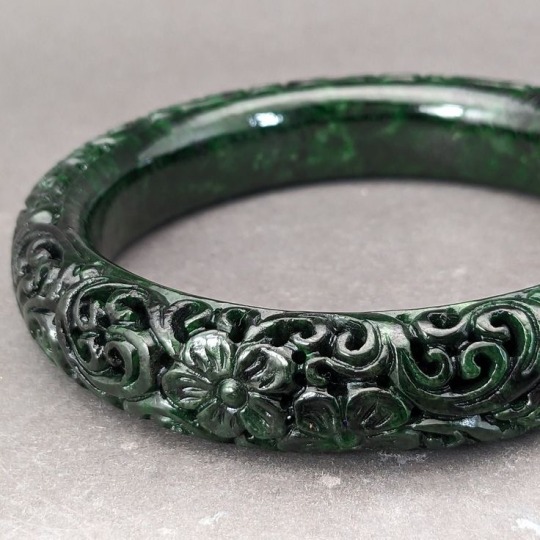

254 notes
·
View notes
Text
Ikepri reigns as real life countries
Hi there again my dear Belles. As we all know, ikemen prince reigns ar based on real life countries, or at least, that's what it looks like, specially knowing character's names, I mean, we have Chevalier (french), Von Obsidian (dutch - german), Ricci (italian), Yves (french), Kagari Amagase (japanese)... But, even though some kingdoms are easily "recognised" in real life countries, there are some others that are not that clear. That's why I've decided to match each kingdom to a country. This is just my opinion, so feel free to expose yours. Hope you enjoy little rabbits!!!!!!
Rhodolite - France
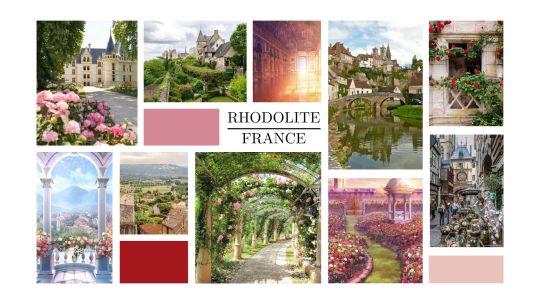
Romantic and Elegant Atmosphere: France is often seen as the epitome of romance, known for its picturesque landscapes, charming cafés, and the enchanting ambiance of cities like Paris. Rhodolite reflects this romantic and elegant atmosphere through the bookshops, the taverns, the little plaza with the fountain, the market, the pastisseries, the landscapes, the town… creating a kingdom where love stories unfold against a backdrop of beautiful scenery and intimate settings. The kingdom features elements like festivals or traditions that celebrate love, happiness, freedom and union.
Art, Fashion, Culture and roses: France has a rich artistic heritage, being the birthplace of influential movements such as Impressionism and home to iconic fashion houses. Rhodolite emphasizes this connection by showcasing characters who pay close attention to this type of visual and external things, such as Nokto with the jewelry, fashion, perfumes, etc. The presence of roses as a symbol of beauty and love could be significant in Rhodolite, with gardens filled with rose varieties and floral motifs present in everything, echoing the French appreciation for aesthetics, and also, it is known that France’s national flower is the rose.
Royal Legacy and Noble Etiquette: France’s history is steeped in royal legacy, with grand palaces, elaborate courts, and a system of noble etiquette that has influenced many cultures. Rhodolite portrays a kingdom that maintains these traditions, highlighting a royal family that embodies elegance, grace, and responsibility. The interactions among the nobility reflect the formal customs and social hierarchies reminiscent of historical French courts, adding depth to character relationships and political dynamics.
Architectural Beauty and Palaces: French architecture is renowned for its beauty, with iconic structures like the Eiffel Tower, the Louvre, and the palaces of Versailles and Fontainebleau. Rhodolite showcases stunning architectural designs, blending various styles like Gothic, Baroque, and Rococo, for example seen in the palace. The kingdom is dotted with grand mansions and beautifully designed public spaces, reflecting the importance of architectural beauty in French culture and serving as a backdrop for significant events and gatherings.
Revolutionary Spirit: France is known for its revolutionary spirit, marked by events like the French Revolution, which reshaped the nation and inspired movements worldwide. Rhodolite embodies this revolutionary ethos by portraying characters who advocate for change, challenge the status quo, and strive for social justice. The kingdom is depicted as a place where ideas of liberty, equality, and fraternity resonate, driving the narrative of personal and societal transformation.
Obsidian - Germany
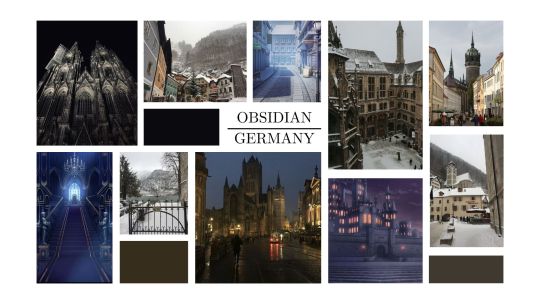
Strength, discipline and Military Power: Germany is historically recognized for its strong military tradition and disciplined approach to governance and society. Obsidian embodies these qualities by depicting a kingdom with a robust military presence, emphasizing values such as honor, loyalty, and strategic prowess. Characters in Obsidian reflect the disciplined nature associated with German culture, portraying dedication to duty and strength in adversity.
Industrial Powerhouse and Innovation: Germany is renowned for its industrial strength, being home to leading companies in sectors like automotive, engineering, and technology. Obsidian highlights this aspect by showcasing a kingdom that values innovation and technological advancement, I mean they “invented” the guns. The presence of skilled craftsmen, inventors, and engineers are prominent, illustrating a society that thrives on progress and economic power, mirroring Germany's historical emphasis on efficiency and quality.
Cold and Austere Atmosphere: Germany’s cultural identity often includes a perception of coldness or stoicism, reflected in its architectural styles, weather, and social interactions. Obsidian captures this austere atmosphere through its landscapes, character interactions, and overall aesthetic. The kingdom is characterized by a serious demeanor, where emotions are expressed more subtly, especially fear, emphasizing strength and resilience over overt displays of warmth.
Central European Strategic Position: Germany’s central location in Europe has historically made it a crossroads for trade, culture, and politics. Obsidian represents this strategic significance by showcasing its role as a threat for other kingdoms that surround the obsidianites. Characters navigate complex political landscapes, reflecting Germany's historical importance in shaping European dynamics and alliances.
Architectural and Cultural Grandeur: Germany boasts a rich architectural heritage, with castles, cathedrals, and modern structures that showcase its historical and cultural grandeur. Obsidian features majestic buildings, representing the kingdom’s power and strength.
Benitoite - Italy
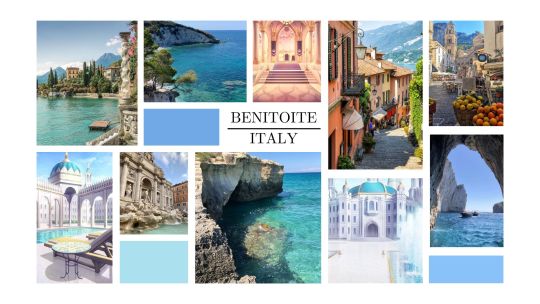
Luxurious Lifestyle and Grandeur: Italy is synonymous with luxury and grandeur, known for its opulent fashion, exquisite art, and historical monuments. Benitoite embodies this luxurious lifestyle by portraying a kingdom filled with elegant palaces, lavish celebrations, and a strong emphasis on beauty and aesthetics. Characters dress in fine fabrics and adorn themselves with beautiful accessories, reflecting Italy’s rich cultural heritage in fashion and art.
A nation benefited by the sea: Italy’s long coastline has significantly influenced its culture, economy, and way of life. Benitoite reflects this connection to the sea through its geography, highlighting vibrant coastal cities and a thriving maritime culture. The kingdom showcases bustling ports, trade routes, and a lifestyle that embraces the ocean, with characters engaging in activities like fishing, sailing, and enjoying the beach, mirroring Italy’s deep-rooted relationship with the Mediterranean Sea.
Gastronomy and Sophistication (the best of the best): Italian cuisine is renowned worldwide for its richness and diversity, emphasizing high-quality ingredients and sophisticated flavors. Benitoite emphasizes this culinary heritage by showcasing elaborate feasts, traditional cooking methods, and a strong focus on fresh, local produce. Characters engage in the art of cooking, like Silvio when he swapped bodies with Rio, celebrating gastronomy as an essential part of their culture, reflecting Italy’s status as a culinary capital.
"The cradle of commerce": Historically, Italy has been a central hub for commerce and trade, particularly during the Renaissance when cities like Venice and Florence thrived economically. Benitoite embodies this spirit of commerce, showcasing vibrant marketplaces, trade fairs, and a culture that values entrepreneurship and innovation, I mean, look at Silvio, nothing more to add. Characters are depicted as merchants, traders, or skilled artisans, highlighting the importance of commerce in the kingdom’s prosperity.
Rich Alcoholic Heritage: Italy is famous for its wine production, with regions like Tuscany and Piedmont known for their exceptional vineyards and rich traditions surrounding wine-making. Benitoite reflects this alcoholic heritage by incorporating wine and other alcoholic beverages culture into its narrative, showcasing characters who appreciate fine liqueurs, attend harvest festivals, and engage in alcohol making traditions. This connection to Italy’s rich alcoholic heritage could also be reflected in the kingdom's celebrations, where drinking plays a significant role in social gatherings.
Jade - The Netherlands

Natural Beauty and Green Landscapes: The Netherlands is renowned for its picturesque landscapes, characterized by lush green fields, beautiful flower gardens (notably tulip fields), and tranquil waterways. Jade embodies this natural beauty, showcasing a kingdom filled with vibrant flora and serene environments, where characters are deeply connected to nature. The kingdom features breathtaking gardens, parks, and countryside, reflecting the Dutch appreciation for their scenic surroundings.
Rich Herbal Traditions and Innovation: The Netherlands has a long history of herbal medicine and innovation in horticulture, with a significant focus on cultivating plants for medicinal and culinary purposes. Jade highlights this aspect by incorporating herbal traditions, where characters utilize local herbs for healing, cooking, or crafting potions. The kingdom is portrayed as a center for herbal innovation, showcasing advanced gardening techniques and a thriving market for medicinal herbs, mirroring the Dutch reputation in this field.
Cultural Heritage, Tolerance and Neutrality: The Netherlands is known for its cultural diversity and historical commitment to tolerance and neutrality in international affairs. Jade reflects this spirit by portraying a kingdom that embraces various cultures (obsidianite refugees) and ideas, fostering an environment of inclusivity and understanding. Characters from different backgrounds coexist peacefully, contributing to a rich tapestry of traditions, beliefs, and customs within the kingdom.
Connected Communities: The Dutch are famous for their strong sense of community and interconnectedness, often seen in their cooperative agricultural practices and social networks. Jade emphasizes this sense of connection by showcasing tight-knit communities where people work together for the common good, support each other, and celebrate local traditions. The kingdom features festivals, markets, and communal events that highlight the importance of relationships and collaboration among its inhabitants.
Wildlife: The Netherlands is home to a diverse array of wildlife, including various bird species, insects, and unique ecosystems like marshes and wetlands. Jade reflects this biodiversity by incorporating elements of wildlife into its narrative, where characters have a deep respect for nature and actively engage in conservation efforts. The kingdom showcases natural habitats and characters who are passionate about protecting the environment, mirroring the Dutch commitment to sustainability and conservation.
Tanzanite - Persia
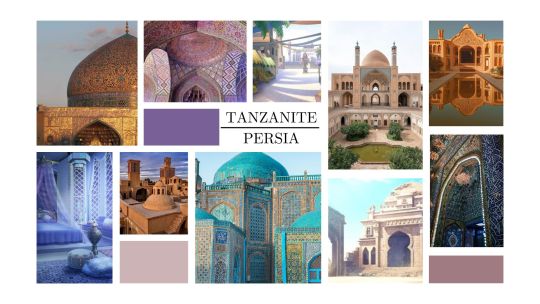
Historical Influence and Rich Heritage: Persia has a rich historical legacy, with significant contributions to art, literature, and science throughout the ages. Tanzanite embodies this heritage by portraying a kingdom that honors its past through storytelling, art, and tradition. The kingdom includes historical sites, ancient temples, and a culture that celebrates its roots, reflecting the grandeur of Persian civilization and its impact on the world.
Persian Aesthetics and Ornamentation: Persian art is renowned for its intricate designs, vibrant colors, and detailed craftsmanship. Tanzanite captures this aesthetic through its architecture, clothing, and decorative arts. The kingdom features elaborate palaces adorned with mosaics, beautiful gardens inspired by Persian design, and characters dressed in richly embroidered garments, showcasing the beauty and sophistication associated with Persian culture.
Philosophy and Mysticism: Persian culture has a long tradition of philosophical thought and mysticism, with influential poets and thinkers like Rumi and Omar Khayyam exploring themes of love, spirituality, and the human experience. Tanzanite reflects this depth by incorporating elements of philosophy and mysticism into its narrative, I mean, Azel is portrayed as a God. Characters engage in discussions about existence, love, and magic, drawing inspiration from Persian literature and thought, creating a reflective and introspective atmosphere in the kingdom.
Trade and Cultural Exchange: Historically, Persia was a vital hub for trade along the Silk Road, facilitating the exchange of goods, ideas, and cultures. Tanzanite could mirror this aspect by showcasing a vibrant marketplace where diverse cultures converge, highlighting the kingdom's role as a center for commerce and cultural interaction. Characters might be seen as traders, merchants, or travelers who bring different perspectives and traditions to the kingdom, enriching its cultural tapestry. Let's not forget the trade relationship between Azel and Silvio...
Economy: Persia was known for its wealth derived from trade, agriculture, and craftsmanship. Tanzanite could have reflected this economic strength by portraying a kingdom that values trade and innovation. The kingdom might have thrived on the production of unique goods, such as textiles, spices, or artisan crafts, showcasing a dynamic economy that supports its inhabitants and fosters prosperity. But the reality that they have shown us is that they are not as economically powerful as they seem. It almost looks like the greater houses are pretty rich while the rest of the population might live in poverty.
Kogyouku - Japan

Cultural Heritage and Tradition: Japan has a rich cultural heritage characterized by traditional arts, crafts, festivals, and rituals that have been preserved for centuries. Kogyoku seems to embody this sense of tradition through its customs, ceremonies, and the way its inhabitants celebrate their history. The kingdom highlights tea ceremonies, calligraphy, and traditional music, emphasizing the importance of honoring one’s ancestors and cultural practices, thus creating a deep sense of identity.
Sakura trees: Sakura (cherry blossom) trees are iconic in Japanese culture, symbolizing beauty, the transient nature of life, and the arrival of spring. Kogyoku incorporates these trees into its landscape, creating scenes of breathtaking beauty during the cherry blossom season. Characters participate in hanami (flower-viewing) festivals, celebrating the fleeting beauty of the blossoms, which aligns with the Japanese appreciation for nature and the passing of time.
Japanese aesthetic: The Japanese aesthetic emphasizes simplicity, naturalness, and the beauty of imperfection, often seen in art forms like wabi-sabi. Kogyoku reflects this aesthetic through its architecture, gardens, and crafts. The kingdom features tranquil gardens with carefully placed rocks and water elements, understated yet elegant clothing, and art that embraces asymmetry and simplicity, capturing the essence of Japanese beauty.
Civil war: The Sengoku period (1467-1603) was a time of social upheaval, political intrigue, and military conflict in Japan, characterized by powerful clans vying for control. Kogyoku draws inspiration from this historical context, incorporating themes of rivalry, strategy, and the quest for power among noble families. Characters embody the spirit of samurai warriors, showcasing their loyalty, courage, and the complexities of allegiance during a tumultuous era, enriching the kingdom’s narrative with historical depth.
Focus on Honor: Honor is a central tenet of Japanese culture, particularly within the samurai ethos. Kogyoku reflects this focus on honor through its characters’ values, emphasizing loyalty, duty, and respect. The kingdom has a code of conduct that guides the behavior of its inhabitants, with stories centered around noble sacrifices and the importance of maintaining one’s honor in the face of challenges. This aspect resonates deeply with the samurai legacy, highlighting the significance of integrity and personal honor within the kingdom.
Achroite - Sweden/Finland/Iceland
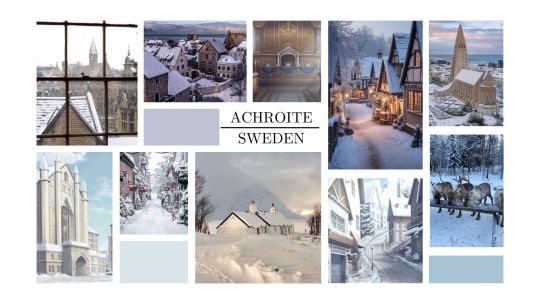
Cultural Coldness and Reserve: The Nordic countries are often perceived as having a cultural disposition characterized by a certain reserve or coldness, particularly in social interactions. Achroite embodies this aspect through its characters, who exhibit a calm and composed demeanor, reflecting the understated communication style of the region. This cultural coldness can be portrayed as a strength, emphasizing the value of inner strength and emotional control, which allows for deep connections beneath the surface.
Commitment to Justice and Equality: Sweden, Finland, and Iceland are known for their strong commitment to social justice, equality, and human rights. Achroite reflects this ethos by showcasing a kingdom that prioritizes fairness and equal opportunities for all its citizens. The kingdom has laws and systems that are pretty strict, emphasizing the importance of social equity in governance and community life, creating a narrative centered around progressive values.
Strong-Minded and Resilient Individuals: The people of the Nordic countries are often characterized by their resilience and strong-mindedness, adapting to the challenges of their harsh environments. Achroite embodies this quality through its characters, who display determination, independence, and resourcefulness in overcoming obstacles. The kingdom might celebrate stories of individuals who stand firm in their beliefs and face adversity with courage, emphasizing the strength of character that defines its inhabitants.
Wisdom and Rationality: Nordic cultures value education, critical thinking, and rational decision-making, often relying on informed discourse and logical reasoning to address societal issues. Achroite reflects this emphasis on wisdom and rationality by portraying characters who approach challenges thoughtfully and analytically. The kingdom is depicted as a center for learning and intellectual exchange, where knowledge and wisdom are cherished, fostering a culture of informed dialogue and progress.
Law and Order as Pillars of Society: In the Nordic countries, law and order are fundamental to maintaining a peaceful and stable society. Achroite mirrors this principle by showcasing a kingdom where justice, rules, and civic responsibility are highly valued. The narrative highlights the significance of laws that promote societal harmony and the role of institutions in upholding order. Characters take on roles as guardians of justice, working to ensure that the kingdom remains a safe and orderly place for all its inhabitants.

And that's it my loves!!!! Hope you've enjoyed this quite long but interesting post!!!! Bibble loves you XOXO.
#ikemen prince#cybird#cybird ikemen#ikemen series#rhodolite#obsidian#benitoite#jade#tanzanite#kogyoku#achroite#belle#ikemen games#ikeprince#ikepri
137 notes
·
View notes
Text


I love them
338 notes
·
View notes
Text
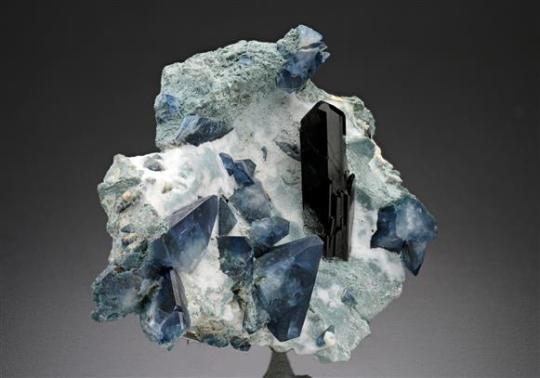
Benitoite with Neptunite Dallas Gem Mine, New Idria District, Diablo Range, San Benito Co., California, USA
573 notes
·
View notes
Text
I may be wrong, and someone else may have already done this, but here's some guess about where did the motifs of each IkePri country came from in reality




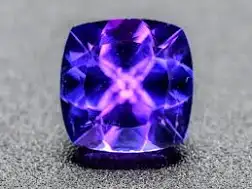


Rhodolite: Bulgaria - known for roses
Benitoite: Italy(Renaissance) - sea, trade, economically prosper, surname Ricci pronounces as Ri-chi
Obsidian: Germany(WWII) - strong military, food shortage, "von" in the surname
Jade: Switzerland - neutral
Tanzanite: India+Persia - religious, the building resembling Taj Mahal
Achroite: Norway - snow, law
Kogyoku: Japan - island, cherry blossom, actually obvious from the name itself
If any of who reads this have other ideas fill me in pls
85 notes
·
View notes
Text

#Manga#Haruko Ichikawa#Houseki no Kuni#Land of the Lustrous#Phosphophyllite#Euclase#Jade#Diamond#Yellow Diamond#Amethyst#Cairngorm#Alexandrite#Benitoite#Watermelon Tourmaline#Peridot#Sphene#Bort#Cinnabar#Hemimorphite#Rutile
54 notes
·
View notes
Text

Earlier Days for the Gems. Pt. 1
Just some doodles of the experiences and emotions these guys felt during their days on homeworld... or..in Pyropes case, just the earlier days...
also made me have fun giving them the very first looks they had.
#su au#gem au#sonic au#sonic the hedgehog#sonic#sth#tails the fox#miles tails prower#amy rose#amy the hedgehog#knuckles#knuckles the echidna#benitoite#heliodor#thulite#pyrope#my art#fan art#digital art#steven universe#sketch#au#alternate universe#gems
99 notes
·
View notes
Text


I'm trying to draw in a Realistic style.
#hnk red beryl#hnk benitoite#red beryl#benitoite#houseki no kuni#land of the lustrous#hnk fanart#hnk#artists on tumblr#my art
29 notes
·
View notes
Note
may i request benito in a glue trap. for the funny.
Also your drawings are so cute i love your artstyle thank you for your service to the hnk community
Waa thank you. I live to serve

60 notes
·
View notes
Note
Do you happen to have any ideas for a blue technician or engineer type gem?

Yes my idea is Blues colonies are powered by blue light energy, the ones that blue diamond produce. In contrast to Yellows in which they use electricity.
There are just concepts for now :)
43 notes
·
View notes
Text


silly gems from totally silly manga
#hnk#houseki no kuni#land of the lustrous#diamond#dia#obsidian#jade#alexandrite#padparadscha#yellow diamond#rutile#morganite#goshenite#euclase#benitoite#ghost quartz#cairngorm#neptunite#amethyst#desta's artwork#sketch#my art#art#doodle#traditional art
28 notes
·
View notes
Text
Ikemen Prince Real Life Castles
Hi babes! I'm feeling like adding yet another layer of delusion to our already delulu brains, so here’s my take on what IkePrince castles would look like in real life. This way, you can visit them while pretending to be Belle running down the hallways looking for your beloved prince.
Rhodolite
The Rhodolite castle would be grand and ornate, with French Renaissance and Baroque influences. Expect elegant stonework, elaborate gardens with fountains, and decorative elements like balustrades and statues. The interior would feature intricate tapestries, gold accents, and chandeliers, exuding an air of refined nobility and romance.
Some examples could be:
Château de Chambord - France
Palace of Versailles - France
Château de Chantilly - France
Château de Chenonceau - France
Schönbrunn Palace - Austria
Dunrobin Castle - United Kingdom
Lednice na Moravě - Czechia
Château de Ussé - France
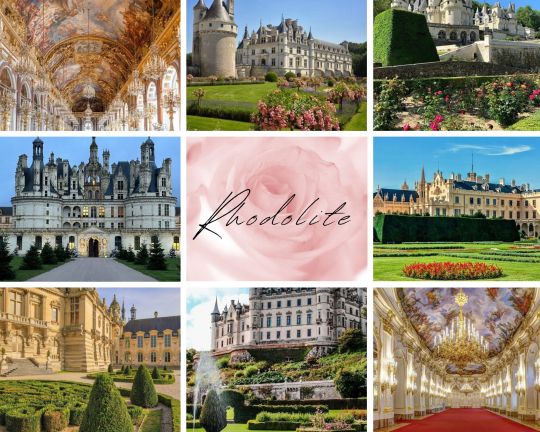
Obsidian
The Obsidian castle would have a stern, gothic architecture with imposing towers and stone walls. Think of dark, medieval castles with fortified structures, high walls, and sharp angles. Interiors would be minimalistic and austere, emphasizing function over ornamentation but with a touch of grandeur in public spaces.
Some examples could be:
Hohenzollern Castle - Germany
Edinburgh Castle - Scotland
Moszna Castle - Poland
Burg Eltz - Germany
Garibaldi Castle - Russia
Château du Bousquet - France
Inveraray Castle - United Kingdom
Cologne Cathedral - Germany
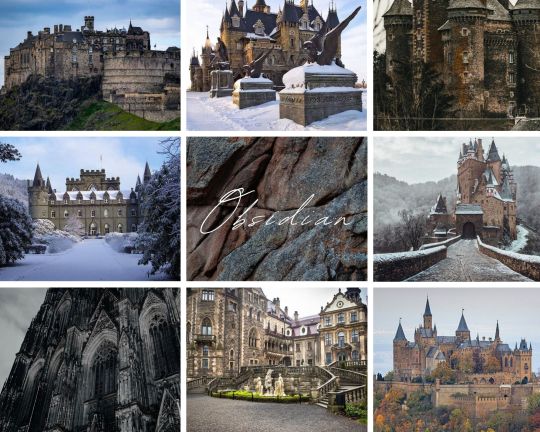
Benitoite
The Benitoite castle would be built with Italian Renaissance and Mediterranean styles in mind. Expect warm-toned stone, arches, and decorative columns. Courtyards would be lush, with fountains and intricate tile work. Interiors might have frescoes, marbled halls, and large windows to let in light, creating a grand yet inviting atmosphere.
Some examples could be:
Palazzo Ducale - Italy
Belvedere Palace - Austria
Howard Castle - United Kingdom
Catherine Palace - Russia
Palazzo Pitti - Italy
Miramare Castle - Italy
Swallow’s Nest Castle - Ukraine
The Royal Palace - Spain
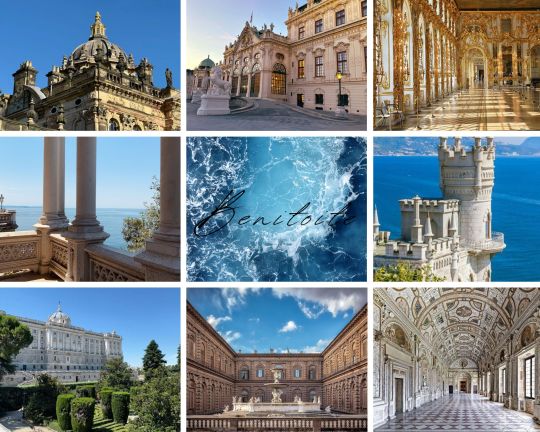
Jade
The Jade castle would be charming, integrated with its natural surroundings. Built in a style that’s less imposing and more in harmony with nature, it would be surrounded by gardens and water features. Think of understated beauty, with an emphasis on wooden accents, greenhouses, and large windows overlooking gardens and the forest.
Some examples could be:
Stoke Rochford Hall Leisure Club - United Kingdom
Harlaxton Manor - United Kingdom
Knebworth House - United Kingdom
Castle de Haar - The Netherlands
Château de Villandry - France
Lowenburg Castle - Germany
Brissac Castle - France
Vouzeron Castle - France

Tanzanite
The Tanzanite castle would be exotic and filled with intricate details, such as domed roofs, archways, and extensive mosaics. The castle would feature courtyards with fountains, lush gardens, and reflective pools, creating a tranquil and mystic vibe. Interiors would be lavish, with patterned tile work, vibrant colors, and plush furnishings.
Some examples could be:
La Sagrada Familia - Spain
Alhambra - Spain
Golestan Palace - Iran
Ali Qapu Palace - Iran
Topkapi Palace - Turkey
Alcázar de Sevilla - Spain
Taj Mahal - India
Shrine of Hazrat Ali - Irak
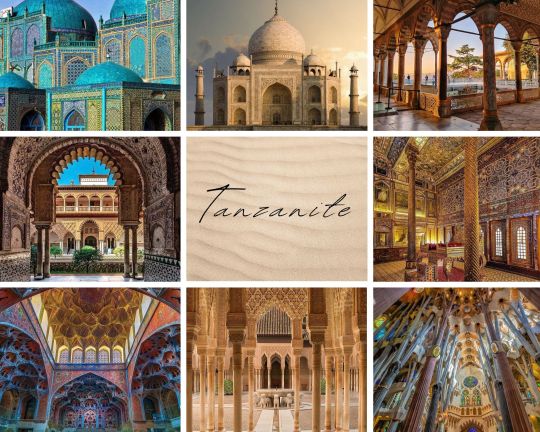
Kogyoku
The Kogyoku castle would have traditional Japanese architecture, with wooden structures, curved tiled roofs, and wide, open spaces for viewing nature. The castle would be surrounded by gardens with koi ponds and sakura trees. Interiors would feature shoji screens, tatami mats, and simple but elegant furnishings.
Some examples could be:
Himeji Castle - Japan
Matsumoto Castle - Japan
Shuri Castle - Japan
Nijo Castle - Japan
Osaka Castle - Japan
Katsuyama Castle - Japan
Nagoya Castle - Japan
Kinkakuji Castle - Japan

Achroite
The Achroite castle would be a blend of Scandinavian minimalism and rugged fortification, built with stone and wood. It would sit atop a hill or near a lake, with a natural and slightly harsh look. The design would be simple, with a focus on functionality and integration with the landscape, including large fireplaces and wood-paneled rooms for warmth.
Some examples could be:
Neuschwanstein Castle - Germany
Château de Ferreries - France
Château de Boismorand - France
Château de Vigny - France
Château d'Haroué - France
Hallgrimskrikja Cathedral - Iceland
Bojnice Castle - Slovakia
Pierrefonds Castle - France
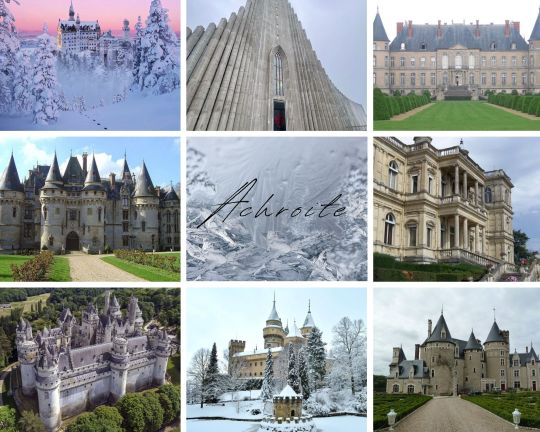
And that’s everything for now! I’m planning to continue this exploration with possible traditional dances, music, customs, fashion, food, and festivities each kingdom might have. What do you think? What would you like to explore next?
See you on the next post my dears!!!!! XOXO
#ikemen prince#cybird#cybird ikemen#ikemen series#ikemen games#belle#ikepri#ikeprince#rhodolite#obsidian#benitoite#jade#tanzanite#kogyoku#achroite
110 notes
·
View notes
Text

17 notes
·
View notes